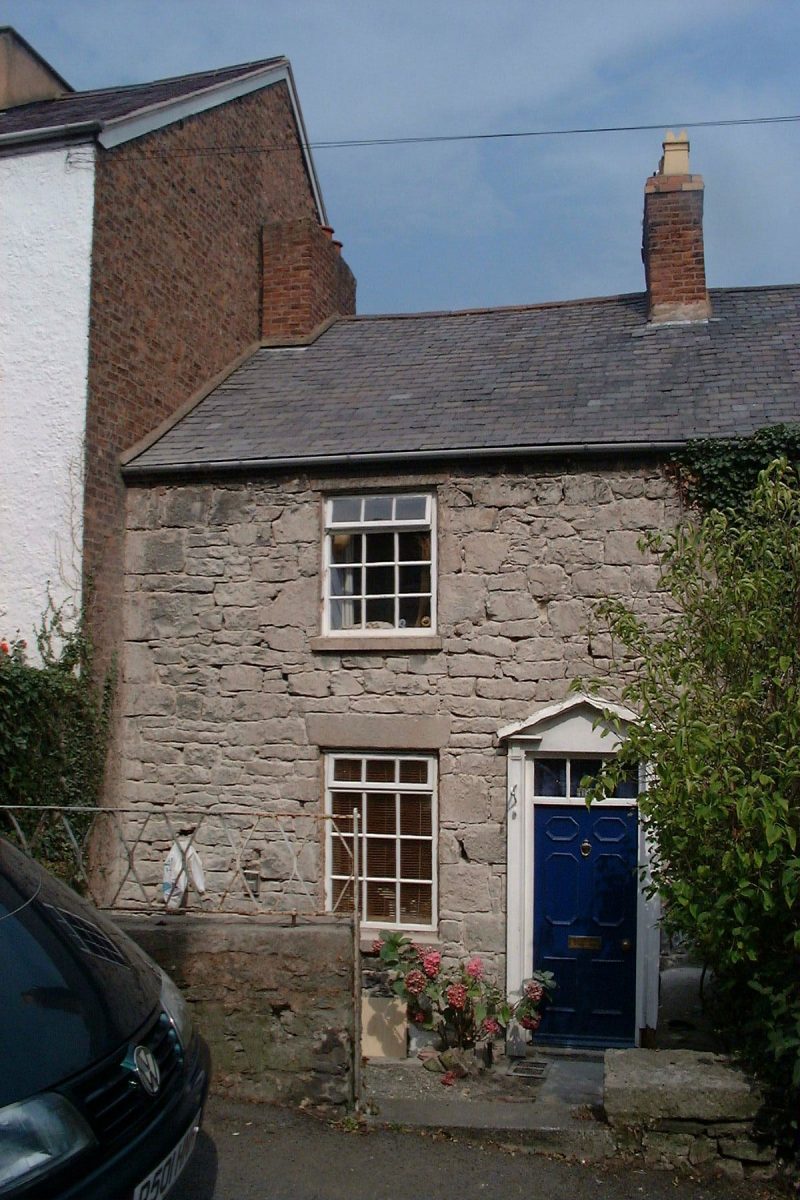Denbigh Townscape Heritage Initiative - Denbighshire
The Denbigh Townscape Heritage Initiative (THI) sought to initiate and encourage action by all concerned, not only in addressing problems relating to the physical heritage, but in acting as part of a wider, inclusive regeneration strategy. Denbigh is a small historic town in North Wales, significant because it was one of the fortified towns established by Edward I. Prominent above the surrounding valley floor and graced by its medieval castle, Denbigh has seen its social and economic profile slowly decline, and in parallel, the condition of much of its built heritage has also suffered. The local authority felt that the built fabric of Denbigh needed to be improved and that there was potential to use the built heritage, such as the castle, to greater effect and to provide greater access to the town centre to support revival of the previously vibrant social, economic and cultural centre.- Planning and Design
-
Planning and Design Process
Management
The initiative was managed through three teams:
- The Denbigh Partnership, which comprised the Denbigh Civic Society, Denbigh Town Business Group, Popeth Cymraeg and the Denbighshire Enterprise Agency;
- The Project Board, which consisted of the funding bodies, including representatives from the Welsh Assembly Government, Cadw, Wales Tourist Board (Visit Wales as of 2006), Denbigh Town Council and Denbighshire County Council; and
- The Project Team, which was the internal support group of Denbighshire County Council.
Objectives
The project ran from December 2000 through until December 2006. Its objectives were:
- To increase awareness among local property owners and residents of the qualities of the heritage in the town centre and the opportunities presented by the initiative.
- To encourage the take up of grants.
- To involve the local community in the initiative decision making process – through participation procedures and representation on the Partnership.
- Ensure high quality repair, reinstatement and new work in order to improve the image and character of the area and to reinforce local distinctiveness.
- Adopt policies and procedures that facilitate the process of economic regeneration and heritage enhancement.
- Ensure that all partners in the Initiative and County Council services are working together to benefit the area – encouraging other regeneration and enhancement schemes complementary to the aims of the Townscape Heritage Initiative.
Renovation
Work was carried out on some 20 properties and a public space, improving the fabric of the town centre. These renovations sought to return neglected buildings in the conservation area to their former glory, both in terms of façade conservation, and in re-establishing many of the current building uses. In particular, new and employment uses were encouraged, as well as upgraded housing and educational and community facilities.
Sustainability Outcomes
Reuse
Re-use of historic buildings is compatible with the principles of sustainability. Such buildings are often suitable for a number of uses due to their structure, space and location. By repairing rather than replacing them, the consumption of additional precious resources is kept to a minimum.
Construction
Repairs were carried out using traditional building methods and materials, which are generally less wasteful in term of natural resources, consume less energy in their production, and because they involve craftsmanship and traditional skills, are often carried out with minimal use of power tools.
Materials
The use of traditional materials and processes, such as lime pointing and rendering, makes for ‘breathability’, and assists in preventing problems associated with modern living, such as condensation, thus limiting the development of mould growths that can lead to respiratory disease, and ensuring longevity of the building. Traditional materials are also more environmentally sound, being sourced from natural and sustainable products, and having low or zero emissivity are often safer for allergy sufferers. They are also more easily and safely removed and disposed of or re-used.
Economic
Re-use of vacant space, especially in the town centre, provides accommodation suitable for commercial enterprise, or residential units, sustaining both the local economy and also the heart of towns such as Denbigh. This maintains the low levels of outward migration that have, historically, helped to keep families together through the generations and preserved the language and culture of the area. Homes can be provided close to facilities, thus saving on travel to work, and encouraging walking, cycling and public transport which provide easily accessible alternatives to the car.
Historic buildings
Whilst many historic buildings do not meet current thermal and acoustic standards, in many cases it is possible to upgrade them without damaging the character, and such work can often be undertaken during the regular course of repair and maintenance programmes. The close-knit fabric of a historic town such as Denbigh has an advantage in that most buildings are attached to their neighbours, with a consequent reduction in energy loss through external walls. Where appropriate, measures such as double glazing and thermal insulation, particularly of roofs, has been carried out.
Quotes
In 2004, the Royal Town Planning Institute awarded it the Wales Award for Planning Achievement saying that it was ‘..a good demonstration of how sensitive regeneration of the historic environment can contribute to community and business confidence’. Furthermore, the RTPI was impressed with the important role planners played in this ‘well-coordinated, multi-functional approach to regeneration’.
- Design and Construction Information
-
Client: Owners of various buildings in the Conservation Area and ‘Denbigh THI’
Architect: Lloyd Evans Pritchard, Purcell Miller Tritton, Chris Sanders, Adrian Jones, ISP Architects. For further details of the design and delivery teams, please contact the Architects.
Date of Completion: December 2006
Contract value: £5 million
Awards: 2004 Royal Town Planning Institute Wales Award for Planning Achievement, 2004 Royal Town Planning Institute National Award for Town Regeneration in Wales, 2005 Civic Trust Awards Welsh Regeneration Award, 2005 Royal Institute of Chartered Surveyors Award shortlist, 2007 Green Apple Award for the Dr Evan Pierce Memorial Garden







